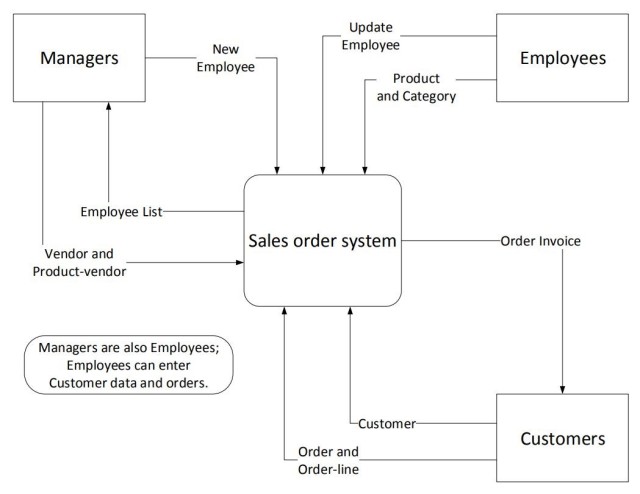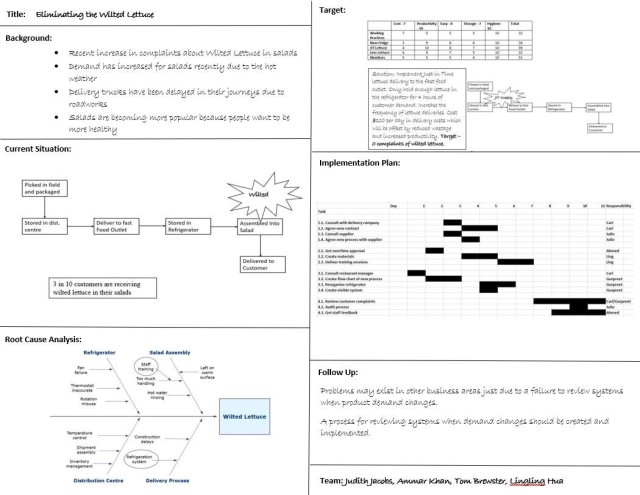Introduction
Predictive methodologies emphasise the creation of a project scope statement at the beginning of a project, as a summary of the project objectives and some elements of its conduct. The scope statement helps the project team focus on its work and is a foundation for the creation of the detailed project plan that is created at the beginning of the project. The project scope statement should also be referred to as the project proceeds and changes are made to the project plan.
The project scope statement is intended to align the work of the project team, enabling it to remain aligned in its work towards the project objectives. This is also necessary in agile projects which do not create a detailed plan for the project at the beginning. Instead, work in each project period, increment or sprint, is determined as the project proceeds and may change according to the desires of the client.
In agile projects, clear objectives are important to enable the project to maintain a consistent focus. A clear and well understood vision is important for all of the project team members. Many agile projects include their vision for how the team will work effectively together in its charter, as a way of emphasising the importance of agile collaboration. A selection of examples and tools are provided to help you consider how you will create your own charter format for your project.
Agile Charter and Team Charter
The Agile Charter describes what the project will achieve, why (its vision), who will benefit from it, how they will know it is completed and how the team will work. The project team will work to create the charter, often facilitated by the servant leader. By creating the charter together at the beginning of the project, the team can form bonds that will benefit them during the project itself.
Charters vary between project teams – there is no set process that the team should follow to create one. Some teams will be experienced in teamworking and will not require a formal charter. Others will adopt a formal approach. The content of the charter that is created can be very basic or more advanced but should be able to be presented on a single sheet of paper. Any longer and it is unlikely to be read or adhered to.
Some charters will focus only on the project objectives while others will incorporate the team charter aspects. The team charter may include the values of the team, working arrangements, rules and norms. The team charter is intended to specify how the team will create an agile environment.
The following sample Agile Charter focusses on just the objectives:
Project Name: Automated Ordering System in a Fast Food Burger Restaurant
Vision: Increase the speed of customers placing orders and the process of fulfilling those orders.
Mission: Evaluate possible technology options, select a technology vendor and implement a technology solution that enables customers to place orders via an in-store terminal and which schedules, monitors and controls order production and delivery to the customer.
Success Criteria:
- Implement the system 120 days from the start of the project.
- Achieve an order placement time of 40 seconds.
- Reduce order production and delivery time by 30 %.
Some charters may also include the Team Charter elements. In the example of the Fast Food Burger Restaurant these elements might be added to the content above:
Project Team:
| Name | Role | Contact |
| Judith Jacobs | Scrum Master | jjacobs@ffburger.com |
| Ammar Khan | Team Member | akhan@ffburger.com |
| Tom Brewster | Team Member | tbrewster2@ffburger.com |
| Lingling Hua | Team Member | lhua@ffburger.com |
| Rafael Ford | Product Owner | rford@ffburger.com |
Rules of Behaviour:
- The team will exercise transparency in all of its activities. All relevant information will be shared with other members of the team.
- Team members will carefully consider the contributions of all members of the team.
- Team members will support each other in their work. Where difficulty is faced others will help where they are capable.
- It is the responsibility of all team members to work collectively to achieve the project objectives.
- The product owner will determine the project activity and project team members will strive to follow the guidance that they provide.
Communications:
- All members will attend meetings on time.
- Daily scrum meetings will be held at 8.30 am. And be no more than 15 minutes long.
- Team visible systems which record project progress will be updated promptly by all members.
- Minutes will be taken of all meetings and distributed within 6 hours of the conclusion of the meeting. Minute taking responsibility will be rotated.
- Whatsapp will be used by all team members to facilitate communication.
Creating the Charter
It is important to stress that the process of creating the agile charter is critical to its successful impact on the project. Creation should enable everyone involved in the project to participate fully so that they have a good understanding of the ideas and motivation of other members of the project team and that they see how the various interests in the project are consolidated. The charter is also used to consult with project stakeholders, including the project clients who will have the power to direct the content of the charter through the product owner.
Other Charter Formats
The format that you use for your Agile Charter is flexible and there are a number of options for the format that you will use. Some agile methodologies have formats that are associated with them that you may wish to try.
The California Department of Technology provides advice on the creation of an expanded Agile Project Charter that you may find useful.
Rich pictures are a visual representation of a system. There are no set rules on the form that it should take, simply that it should allow you to better understand how the various elements of a complex system relate to each other. As with other charting techniques, its value is that it provides a better understanding of the system that you are understanding or creating and enabling that to be shared and understood by a wide range of stakeholders. The following example of the Police Statement Request Process illustrates this technique:
From: https://elabor8.com.au/rich-pictures-and-catwoe-simple-yet-powerful-scope-modelling-techniques/
Context diagrams are also used to visualise systems. They are a flow chart that is focussed on the elements that are external to a system that a project may be working on. The system is at its centre and the elements are depicted around it. The University of Waterloo provides guidance on their use on its IST Project management site and include the following example:
From: https://uwaterloo.ca/ist-project-management-office/tools-and-templates/tools/context-diagram
Finally, A3 diagrams, frequently used in Lean Manufacturing, can be used to describe the project. They provide a structured approach to displaying the various elements of the project and enable a systems or integrated approach to be taken to their understanding. The following example is based on a Wilted Lettuce problem in the Fast Food Burger Restaurant.
These examples of tools that can be used to create Agile Charts are intended to help you consider the format that you will use for your own project. The agile methodology stresses that the tools should not simply be copied and used but rather that you carefully consider what will work best for your project, adapting previously used tools where necessary.




Excellent! thank you.